I have three requirements for a perfect summer skirt: it must be comfortable, it must be flattering, and it absolutely must have pockets. (Underline that last one three times and circle it in red.)
In this tutorial, I’ll show you how draft a simple elastic-waist skirt pattern that’s custom-made to fit your body, then we’ll use that pattern to make a cute, stylish skirt that sews together in a couple of hours or less. (True story. I made two in a row last Saturday afternoon.) I’ve also provided a handy fabric width and skirt size guide below so you can raid your stash with confidence!
Update: I’ve added a fancy new plus size fitting guide! You can find the suggested changes to the pattern and waistband construction in the blue box in step 1.
Wait. Does the world really need another elastic-waist skirt tutorial?
I guess you can be the judge of that. But, after spending the first few weeks of spring searching for a new go-to skirt pattern, I was left feeling a bit underwhelmed. I mean, sure, there are a million quick-and-easy elastic waist skirts out there, but, really, most of them didn’t seem all that flattering, especially for actual grownups who might want to wear them in public.
Bottom line: a flattering skirt needs the right proportions. So, I experimented until I found a pattern-making formula that consistently produced nice, non-bulky gathers at the waist, a loose drape, and a gentle a-line shape. That’s exactly the kind of classic silhouette that I’m looking for in an everyday throw-it-on-and-go-or-dress-it-up-with-pearls summer skirt. If that’s what you’re looking for too, I’m so glad you’re here!
A special thanks goes out to my pals at Dritz, who inspired this tutorial when they generously sent me a huge box containing ALL OF THE ELASTICS and other fun sewing tools and supplies!
Please note that the links to supplies and tools that are provided below are affiliate links, and I will be compensated if you choose to make a purchase after clicking through.
Supplies:
* 2 yards of light or medium-weight cotton fabric (see below for information on sizing and common fabric widths)
* ½ yard of a light or medium-weight cotton fabric in a contrasting color
* 1" knit elastic
* Sewing thread
* Paper for making the pattern
* Fray Check
Tools:
* Measuring tape
* Quilting ruler
* Iron and ironing board
* Fabric marker
* Pencil
* Fabric scissors or rotary cutter and mat
* Paper scissors
* Clover wonder clips or straight pins
* Sewing machine
* Serger (optional)
Here are the largest skirt sizes—measured at natural waist—that you can make using the following common fabric widths:
- 36" fabric width: up to a 30" waist.
- 45" fabric width: up to a 39" waist.
- 54" fabric width: up to a 48" waist.
- 60" fabric width: up to a 54" waist.
Fabrics used for the skirts in this tutorial:
- Navy skirt with scientific drawings: BLÅVINGE from IKEA for the skirt, gingham for the pockets.
- Grey skirt with coffee pots: Cuppa Joe from Monaluna for the skirt, Lecien Dots 4506 WG (green polka dots on white) from Lecien for the pockets.
- Cream skirt with stripe: Moda Muslin from Moda for the skirt and pockets. (This is a wearable muslin from test-sewing the skirt design for this project. I stitched blue running stitches up one side for a bit of added color and texture.)
- Gingham skirt: A super lightweight navy cotton gingham that I picked up in the sale rack at a local Brooklyn fabric shop for the skirt (neither the bolt nor the selvedge were labeled), The Library from Rebekah Ginda’s Robotic collection for Birch Fabrics for the pockets.
Making the Patterns
Step 1:
Make the skirt pattern.
Measurements:
First, use a measuring tape to measure the following:
- Your waist circumference. (Mine was 27".)
- The distance between your natural waist and where you would like the hem at the bottom of the skirt to fall. (I measured from my natural waist to the middle of my knees, which was 21".)
Math:
Once you have those measurements, fill them into the equations in the illustration above to find your skirt waist, skirt length, and skirt bottom measurements. (Seam allowances are built in, so you don’t need to add any.)
Example:
- My waist circumference is 27", so my skirt waist measurement is as follows: (27" + 1" = 28") ÷ 2 = a 14" skirt waist measurement.
- Now that I know that my skirt waist measurement is 14", I can add 2 more inches to get my 16" skirt bottom measurement.
- Finally, to get my skirt length, I add 3 inches to my 21" waist-to-knee measurement to get a 24" skirt length measurement.
IMPORTANT NOTE ON FABRIC WEIGHT AND SKIRT BULK:
If you’re using fabric that is heavier than a lightweight cotton OR if you like less fabric bulk in your skirts, I strongly recommend that, regardless of your clothing size, you use the plus size pattern adjustment below. (If you’re just adjusting the pattern to reduce bulk, you don’t need to adjust the waistband, just the skirt pattern.) Bottom line: The “plus size” adjustment has more to do with fabric bulk than with your actual clothing size. If you’re a size 2 and sewing with a heavier cotton, you should use it. End of story. (Not sure? Make a muslin in the same weight as your fabric! That’s what they’re for.)
Thanks to some wonderfully helpful feedback from Amy at Knitty (Thank you!), here are some suggestions for improving the fit results in plus sizes.
As with all self-drafted patterns, I highly recommend testing your pattern by making a muslin first so you can adjust the fit before cutting into any special fabrics.
Suggested changes in the pattern math above for plus size patterns:
- skirt waist measurement = (waist circumference x 0.75) ÷ 2
- There are no changes necessary for the equations for the skirt length measurement and the skirt bottom measurement.
What does this adjustment fix?
This change will remove some excess fullness from the skirt that, in plus sizes or in thicker fabrics, can make the skirt look puffy and can make the gathers around the waist look and feel too bulky. If you make a muslin and find that the skirt still seems too full, try reducing the multiplier even further from 0.75 to 0.6.
Suggested changes to the waistband construction (see step 8):
- Cut a piece of elastic to your waist circumference – 5 inches
Wait. Why am I decreasing the circumference of the waistband?
From what I can tell, as the length of the skirt waist measurement increases (or if you’re using especially heavy fabric), there’s a point at which the force exerted by the fabric resisting the gather at the waist is stronger than the compression of the elastic waistband, so the elastic stretches to accommodate the fabric instead of squeezing the fabric into tighter gathers to fit the size of the waistband. This can result in waistbands that are too large in finished plus size skirts. To get the correct fit, the waistband needs to start out slightly smaller to accommodate for any extra stretching that might occur as the fabric gathers around the waistband.
Test this measurement out by wrapping the elastic around your waist before you cut it. It should stretch slightly in a way that feels snug and secure, but still comfortable. If you feel like you need more room, add additional inches to the elastic length until you reach the fit that’s right for you.
Quick fix: If you find that the waistband is too big in your finished skirt, you can always open an inch or two of the seam around the waist, remove a bit more length in the elastic waistband, then sew the waistband together again and re-close the seam around the waist.
Drawing the pattern:
To make your pattern, start by drawing a vertical line using your skirt length measurement, and then add the horizontal skirt waist line to the top and the horizontal skirt bottom line to the bottom. (The skirt waist line and the skirt bottom line should each create a right angle with the skirt length line.) To finish, draw a diagonal line connecting the open ends of the skirt waist line and the skirt bottom line.
** Unless you’re using the plus size guidelines above.
Step 2:
Make the pocket pattern.
To draft a pattern for the pockets, I drew a right triangle that was 9" tall and 12½" in length, then I rounded the end by hand with a pair of scissors.
This pocket size fit my hand nicely, but definitely feel free to play around with different pocket sizes and shapes until you find something that meets your needs.
Sewing the Skirt
Step 3:
Place the skirt pattern along the center fold of the of the fabric. (In preparation, the fabric should be squared, then folded in half—selvedge edge to selvedge edge—with wrong sides together.)
Cut 2 pieces, one for the front of the skirt and one for the back.
Using your contrast fabric, cut 4 pieces for the pockets.
Step 4:
Unfold the two skirt pieces. On the right sides of both, use your fabric pen to make a dot 3" down from the waist on each side. This will mark the position of the top corner of each pocket. (You will draw a total of 4 dots—two on the front skirt piece and two on the back skirt piece.)
Step 5:
With right sides of the fabric together, pin the 4 pocket pieces in place along the edges of both the front and the back skirt pieces, lining up the top corner of each pocket with a dot that you made in step 4.
Use either a serger or a zigzag stitch to sew along the side edges of each skirt piece with a ¼" seam allowance, securing the pockets in place.
Open the pocket pieces to the outside of the skirt, then press the seams flat.
Note: I finished all of my raw edges—including the edges around the outside of the pockets—with my serger. If you’re not using a serger, you may want to use a zigzag stitch around the outside edges of the pockets to prevent fraying.
Step 6:
With right sides together, pin the front of the skirt to the back of the skirt, taking care to line up the side edges and the pocket pieces.
Join the front of the skirt to the back by sewing along the side edges and around the outside edges of the pockets with a ½" seam allowance. (Look! You just made pockets!)
If you used a zigzag stitches instead of a serger in step 5, these stitches will stay in place, finishing the edge of the fabric and preventing fraying.
Press the seams open.
Tip: Make sure you continue your side seams around the outside edges of the pockets. If you keep sewing straight along the edge of the skirt, you’ll sew the pockets closed.
Step 7:
With the skirt still inside out, fold the edge of the waist over a ¼" and press it in place.
Constructing the Waistband
Step 8:
Cut a piece of elastic to your waist circumference + 2 inches. (This adds enough ease for the gathered fabric around the waist.)
Use Fray Check to seal the ends.
** The measurement that you should be using for this step is your actual waist circumference, NOT the skirt waist measurement number that you calculated when making the pattern.
Note: If you prefer a snugger fit in the waist, cut the elastic to your waist circumference + 1 inch. (If you’re using heavier fabric, try the waistband adjustment in the plus size fitting guide in step one—sometimes heavier fabrics can stretch out the waistband, making the finished skirt too big, so shortening the waistband further can help you get the right fit.)
Step 9:
Fold the elastic band in half, bringing the ends together while taking care not to twist the elastic. Sew them in place with a ½" seam allowance.
Once the two sides of the elastic have been joined, fold the ends open and secure each side to the band with a ¼" seam allowance.
Tip: For even more security, you can zigzag stitch along the exposed center seam (catching both sides in the zigzag) to reinforce the join.
Installing the Waistband
Step 10:
On the wrong side of the fabric, fold the fabric at the waist snugly over the waistband, lining up the bottom edge of the elastic with the raw fabric edge from the fold in step 7. Secure a few inches of the band in place with clips or pins.
Make sure the ¼" fold from step 7 extends below the waistband—you will sew around the waist on this ¼" fold, so you don’t want it to overlap with the elastic.
Step 11:
Begin sewing along the bottom edge of the ¼" fold, encasing the elastic in fabric. DO NOT SEW THROUGH THE ELASTIC.
Continue wrapping the fabric around the waistband and sewing along the ¼" fold, gently gathering the excess fabric and moving it out of the way along the elastic as you sew. Once you’ve reached the beginning, backstitch over the end of the seam a few times to secure.
Note: At this point, the elastic should move freely inside the waist of the skirt. This will allow you to distribute the gathered fabric evenly around the waistband. Once the fabric is evenly distributed, feel free to sew the elastic in place along the side seams of the waist.
** There are tons of right ways to insert an elastic waistband into a skirt. I chose to construct my band in advance instead of feeding it through the waist of the skirt after sewing because I’ve found that joining the ends of my bands first makes them sturdier. That said, if you have a favorite method for inserting a waistband that’s different than mine, go for it! (Just keep in mind that you’ve only got 3 inches to play with before you hit the top of the pockets.)
Finishing the Skirt
Step 12:
Hem the bottom of the skirt.
On the wrong side of the fabric, fold the bottom edge over ¼" and press into place, then fold the edge over another ¼", encasing the raw edge of the fabric. Sew around the folded edge, finishing the hem.
Turn the skirt right side out, push the pockets inside, then press the bottom hem flat.
One final tip: If you haven’t pre-washed your fabric, the drape of your finished skirt might feel a little stiff. To make the fabric flow more freely, just wash the skirt to remove the sizing in the fabric. (This will also make the fabric gathers around the waistband relax and lie a bit flatter.)
During the process of designing this tutorial, I whipped up enough skirts to keep me cool and comfortable all summer long, and I can’t wait to wear them all.
Now it’s your turn! I hope you have a ton of fun designing and customizing perfect summer skirts of your own, and don’t forget to share links/pictures of your lovely creations! (I want to see what you come up with!)

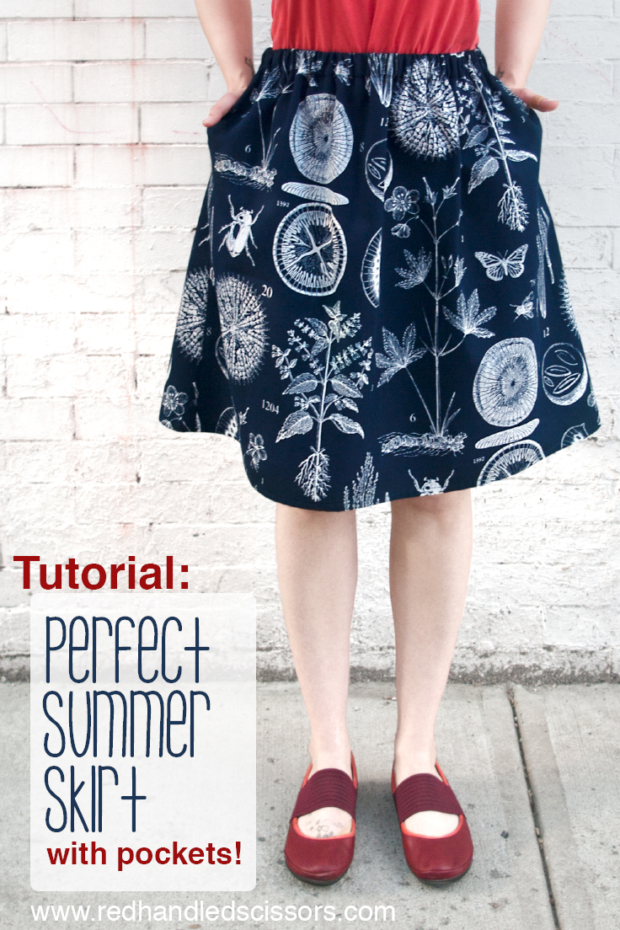
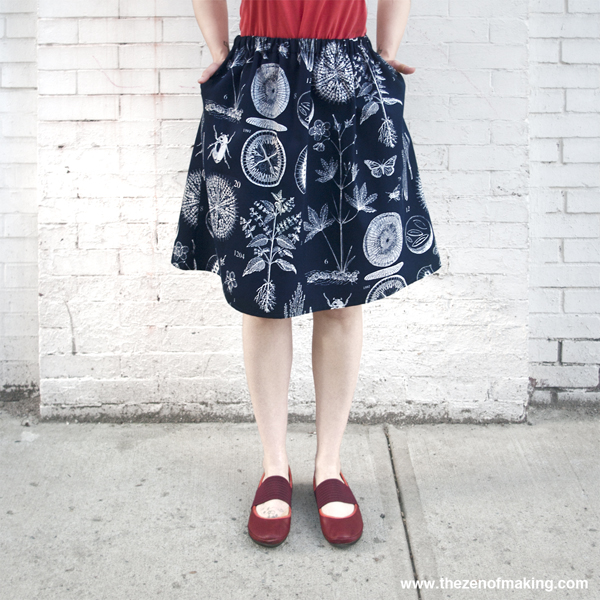
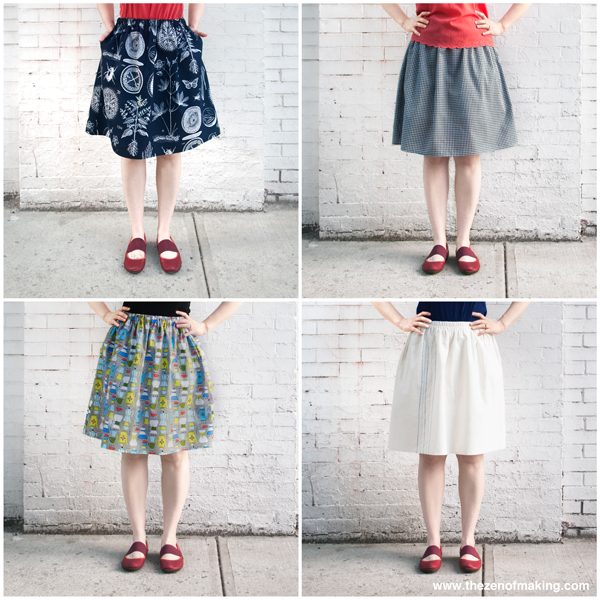
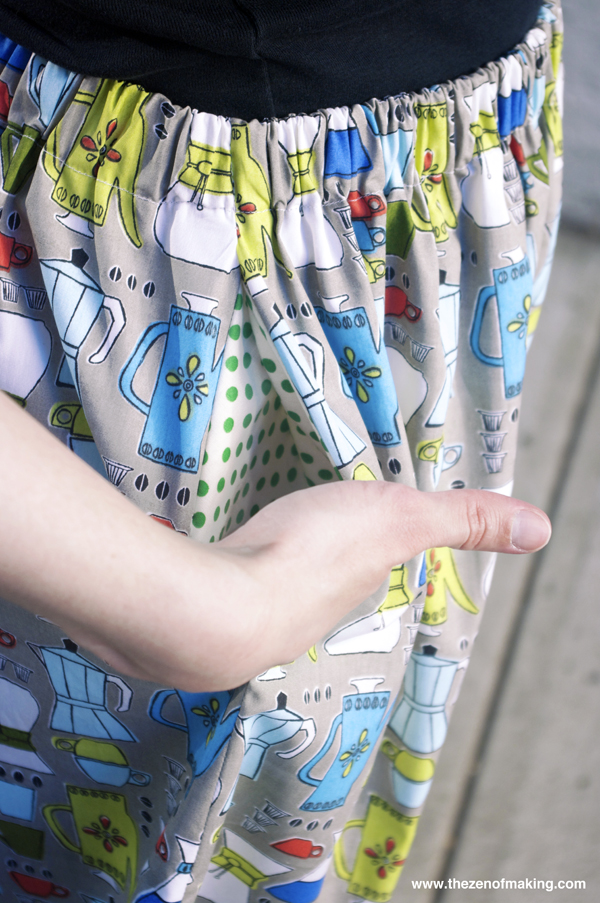
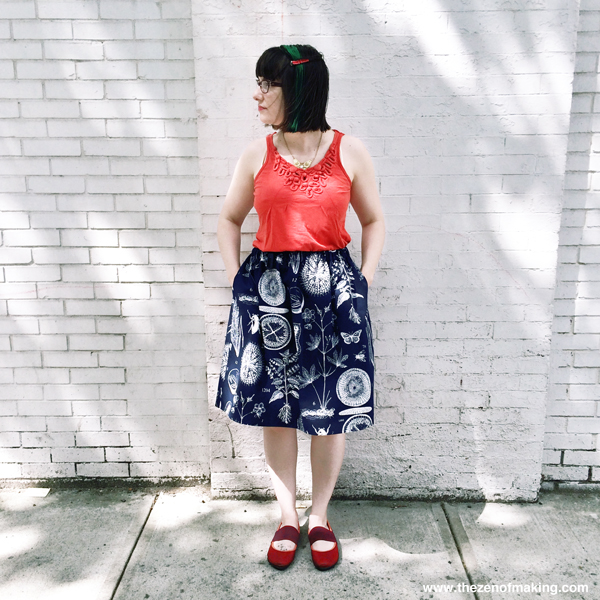
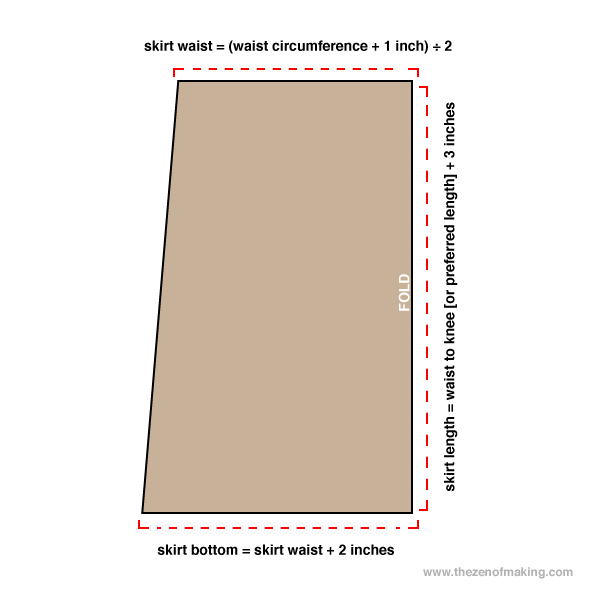
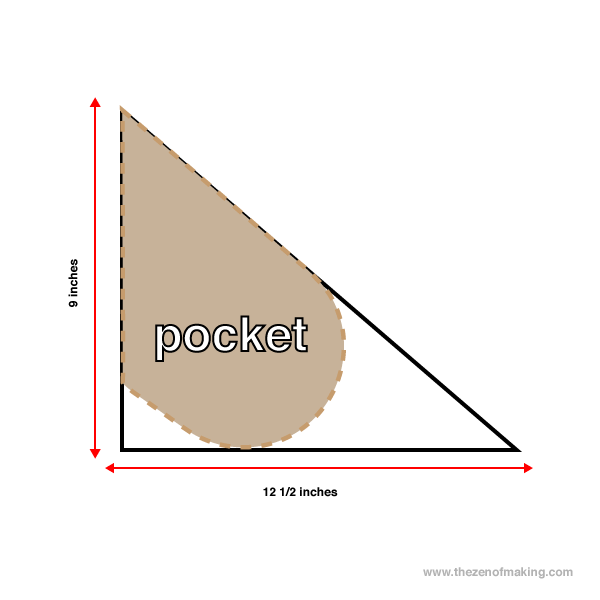
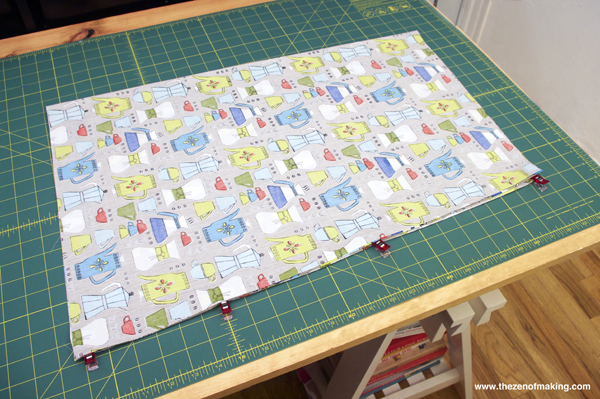
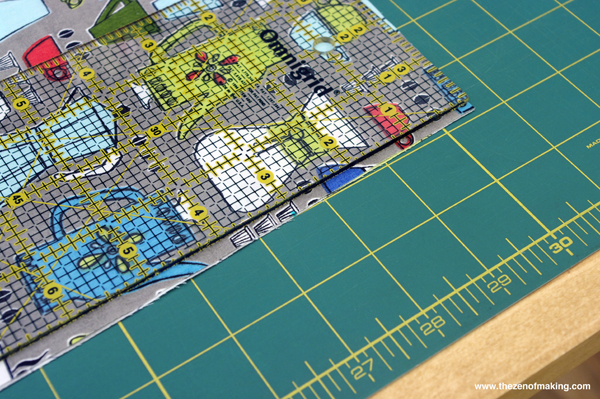
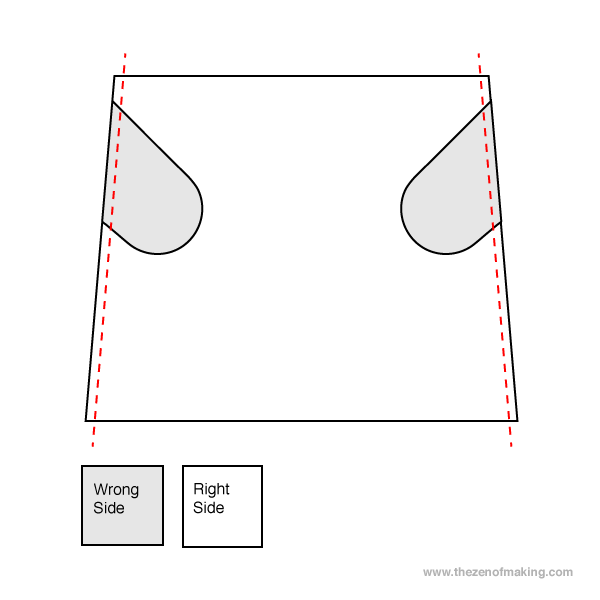
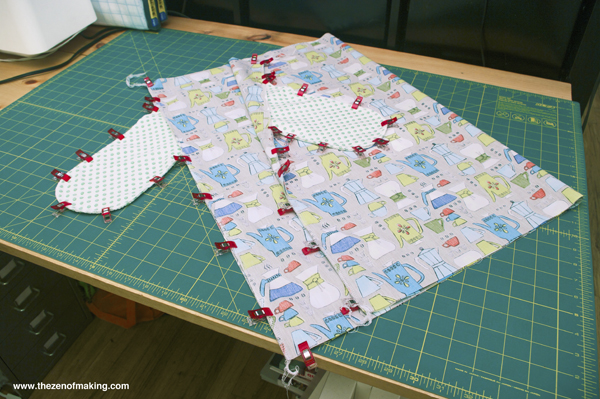
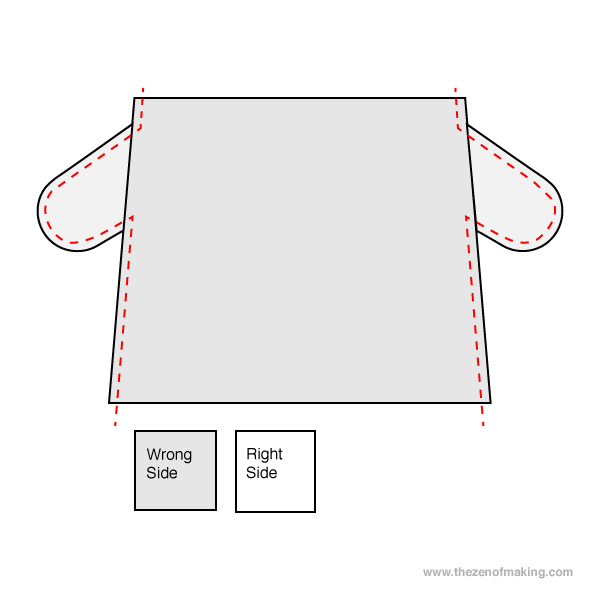
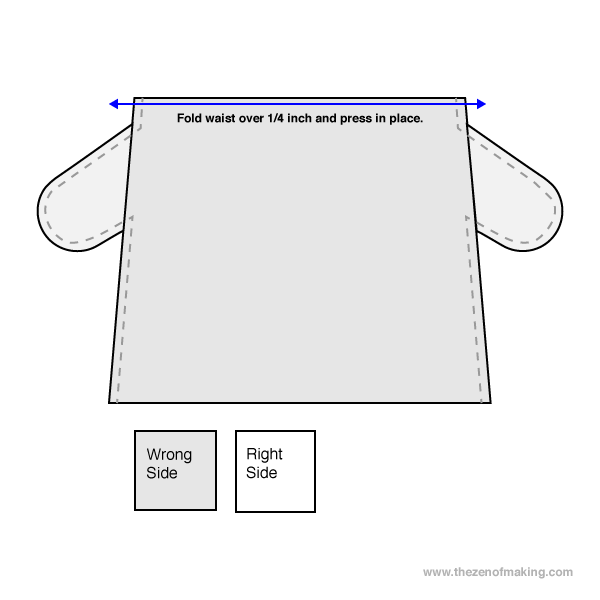
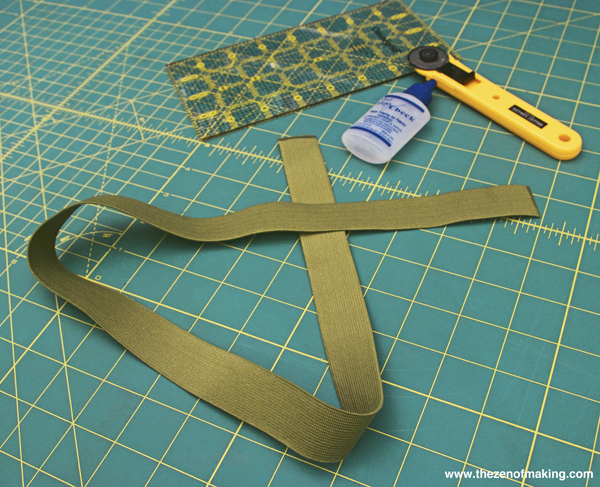
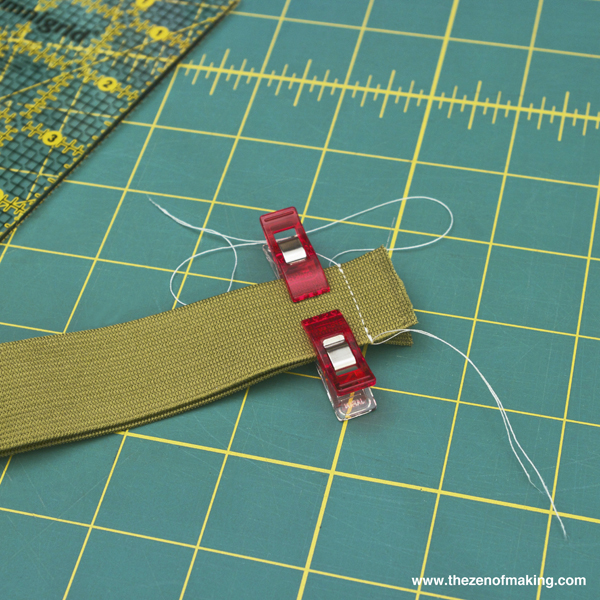
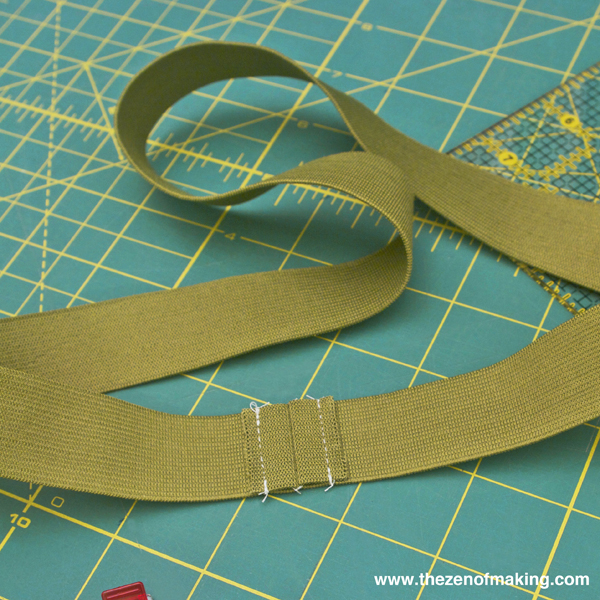
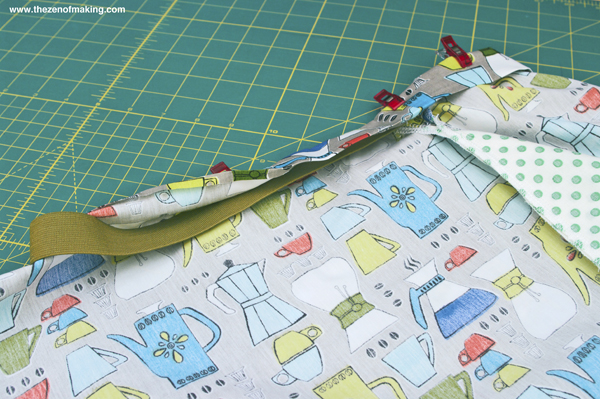
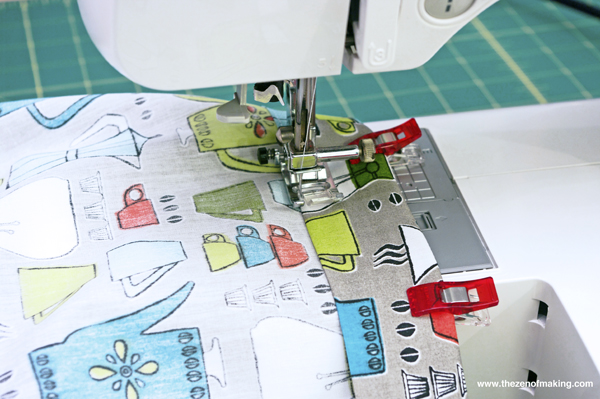
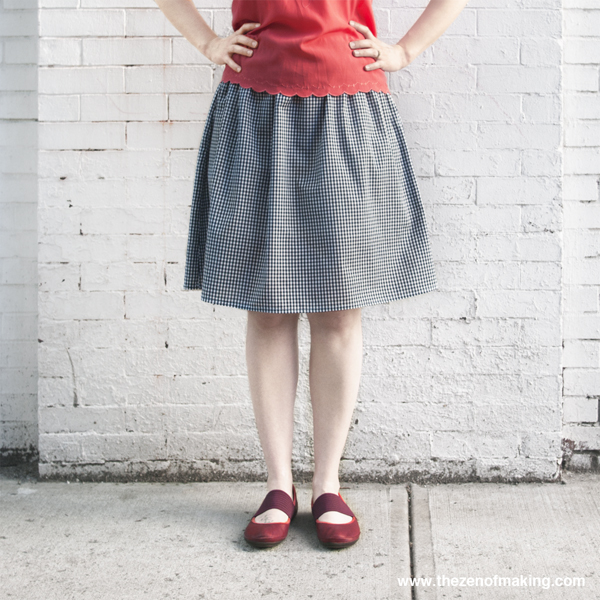
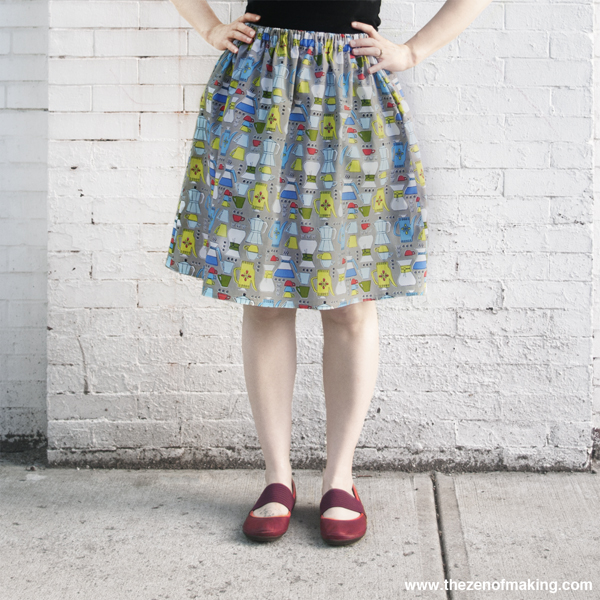
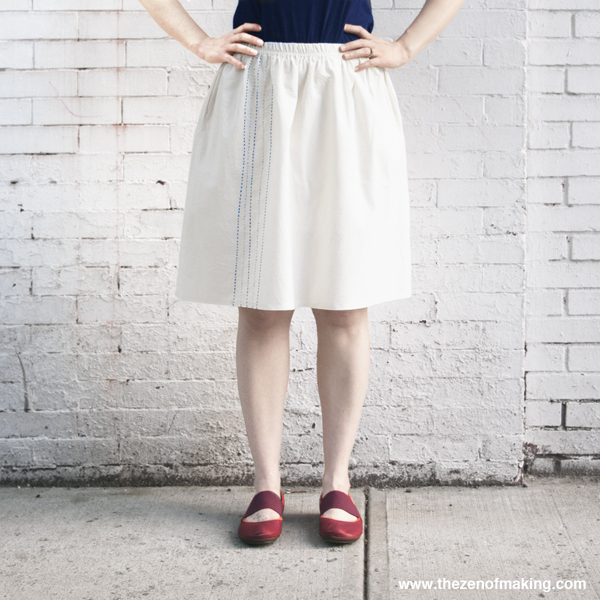
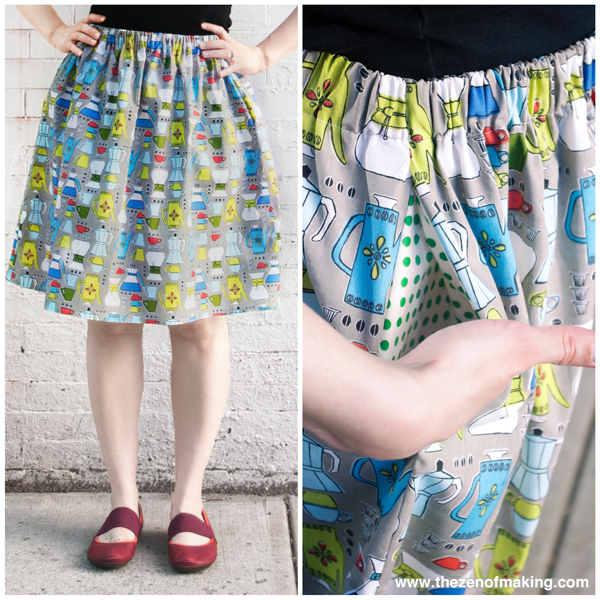
This is so kind, sweet and generous of you to share your skirt pattern! I love them! I, think, even I, who hasn’t sewn much in years , could do this! I love to wear little skirts in summer and in recent years past have purchased the little skirts Target carries but haven’t found them lately (maybe online). This is so much nicer though, to be able to make my own! And…yes…pockets! Hooray! I even took a one-day sewing class a couple years ago for making basic pajamas (had high hopes of making them for the daughters and granddaughters, ha!) but I couldn’t even get that first pair for me right! So thank you for this! Now…where is that foot pedal packed….
Thanks, Valerie–I can’t wait to see what you make!
So glad to have found this, because patterns scare me but measurements I can do. I made a practice skirt and one with a fabric chosen by my 9 year old. I have only sewn masks and pillows previously.
After making the practice skirt, I realized that to make a child’s skirt the pockets should stay the same and if you want it to be a less poofy it helps to make the bottom measurement smaller. I did the skirt top measurement + 1.5. The length being so much shorter makes the angle from top to bottom much wider, making it flare out more. For reference the desired skirt length was 13.5 inches. After doing the practice skirt with original measurements for waist and bottom I settled on one between original and plus and my daughter couldn’t be happier.
Can’t wait to see what I can make next!
Thanks for the tips for making the tutorial work for kid sizes! I’m so glad your daughter is happy!
For those of us with significant waist/hip differences, using the hip measurement plus 1″ for the waist measurement works, allowing it up and over those hips. But it will give the skirt more pouf around the waist :) Either that or a zipper and whose got time for that when you’re making a bunch of skirts?
Before the waistband is installed, the waist opening of the skirt is twice the length of your waist circumference. (The skirt waist measurements for both the front piece of the skirt and the back piece of the skirt are individually the full length of your waist circumference, which doubles once the front and the back are joined.) As long as your elastic is reasonably stretchy, it seems like there should still be plenty of ease in the waist once the waistband is installed. (I’m a gal with a substantial butt-to-waist ratio, and I’ve got more than enough stretch.) But, maybe I’ve just been staring at this project for too long, and I’m missing something?
Man, Alive, Haley! This tutorial is a gem. I’m gonna make a dozen of these skirts to wear all summer long. You’re right, I have yet to find an elastic-waist skirt that actually fits me well, and this construction looks absolutely perfect. Thank you for this detailed, clear, beautifully-documented gift to the community!
Thanks, ladyfriend! Your comment really makes my day!
Now that we’ve brought most of our friends over to Team Hexie, I’m thinking that Team Summer Skirt may be in order. I do love a good uniform.. ;)
I can’t wait to try this tutorial, and I’m also kind of dying to know where you found those red shoes – so cute! Thank you :)
My shoes are Campers from the Right collection: http://www.camper.com/en_US/women/shoes/right
(They’re from last fall’s collection, so the colors are darker than the currently available spring line.)
This is an awesome, clear tutorial! I see lots of these in my future! Thank you!
So kind of you to share. I have love to sew and have always used commercial patterns because I thought making my own would be too time consuming, at least for this farmers wife and mom of 4. This sounds so simple. Diffenatly one to try. My only concern is that I can keep the skirt up. The last time I made a skirt from a commercial pattern it was big enough to get on over my hips but too big to stay.
Thanks for the kind words, Lisa. I’m so glad you’re going to give it a try!
In response to your concern about the waist: The waistband is cut to your natural waist measurement (plus 1 inch to accommodate the fabric gathers around the waistband), so you should have no problem keeping it up where it belongs. (Because of the way the fabric gathers gently at the waist, when you stretch the waistband, there will also be plenty of room to pull it up over hips.)
I hope that helps!
This is probably a silly question, but I’m a sewing novice; I’ve made curtains for our camper and that’s it! Can I two one yard panels of fabric instead of a continuous two yards? Does that make sense? My daughter found a print she loves, but they only sell it in pre-cut one yard pieces.
That’s not a silly question at all! You can certainly use two panels as long as they’re each wide enough for one side of the skirt.
Such a perfect skirt! Awesome job!
Made the skirt. Doesn’t work with my body tyoe. But very cute on you. My hips are 36 and my waistline is 34 so the 36 inch elastic made the skirt too big. I will have to make some adjustments and try again.
Sorry you didn’t get the results you were looking for!
Troubleshooting a bit: The 36 inch elastic should yield an elastic waistband with a 35 inch circumference once you’ve sewn the ends together with a 1/2″ seam allowance. On my skirts, the gathered fabric around the waist took up much of that remaining extra inch, leaving only a bit of ease in the waist for comfort. But, if you’re looking for a snugger fit, you can definitely cut a 35 inch piece of elastic next time, which would produce a 34 inch elastic waistband after you sew it together. (I’ll add this suggestion to the tutorial, in case there are others looking for a snugger fit.)
Suggestion for a quick fix: You can always open an inch or two of the seam around the waist, remove a bit more length in the elastic waistband, then sew the waistband together again and re-close the seam around the waist. That shouldn’t take very long at all, and then you’ll have a better idea of the most ideal waistband measurement to use next time. (To make things easy, I’d feel around the waist of your skirt and find the spot where you sewed the waistband together, then open the seam there.)
I hope this helps!
I agree like Lisa I made this skirt and it was just poufy(sp?) no matter what adjustment I made. I used the calculations for plus size fitting, and I even adjusted the elastic but it was still poufy. I think these are only good for women with smaller hips and waist lines. Thanks for the clear directions though. I had fun making this skirt even though it didn’t look good on me.
Giving it a go now; haven’t sewn anything for a while so its been slow going, especially when following the wording way too carefully and not using my brain – ended up sewing the pockets up because it said put the right sides together; when really it meant the right side of one panel and the pocket! I’m at the elastic stage now; hoping I understand the instructions enough to do this part right!
Love the idea and shape though – thanks for the generous tutorial! I can see I need to brush up more on my sewing skills!
I did it! Yay! Thank you so much for this tutorial; so happy I have made my own skirt with pockets! Woo!
Awesome! :D *high five*
hi haley! such chic and super cute skirts – love your choice of fabric and your shoes!! thank you for the great tutorial =)
Thank you for this great tutorial !
I made myself a nice skirt WITH pockets, just in time for vacancies…
(I have to say that I had the worst time figuring out HOW to place my pockets. I un-sewed them twice. … Not very proud of my brain today !! But I thougt that just looking quickly at your tuto would be enough. Obviously it isn’t, well, for me at least ! But anyway, now I have a skirt. And pockets ;) )
Thank you!!! You have no idea how this helps me. Going to make a bunch of these.
Thanks so much for your kind sharing. I made 4 out of your pattern guide and more to come. Love them sooooo much!
Awesome! So glad you’re enjoying your skirts!
A note on hemming – if you have a particularly voluminous posterior (OMG Becky…), the hemming method given here will result in a skirt that is higher in the back than in the front. To eliminate this problem, put the skirt on and wear shoes of a similar height to what you’ll mostly wear with the skirt. Stand straight, and have a friend use a measuring stick to measure from the floor to where you want the hem to be. Note this measurement, then place pins at this height all around the skirt. This marked line is the line on which you should make your final fold for the hem. It will look crooked hanging on a hanger, but on your body it will be nice and level.
Yes! Great tip! I too am a gal with plenty of back. (Not that you can see it in the tutorial photos, what with the a-line of the skirt doing its duty, but there’s about 10 inches difference between my waist and hip measurements, and it’s all butt.) I haven’t really noticed the height difference much in my own skirts, but this is definitely a great solution for fixing the problem if it is visible. Thanks for sharing!
I agree with the skirt wowing in the front. I have a sway back (didn’t know it until I started sewing) and the skirt pattern has always wowed in the front. Very annoying!
The other thing I find as well is the skirt rises at the side seams. In other words, it wows in the front (like a sideways C) and again at the back. I think that doing the hemming this way should prevent that problem as well.
Once I’ve got the skirt the way I want it I adjust both the muslin and the paper pattern so the time it should be right.
Thanks Haley for the great tutorial. I haven’t sewed in years but you make me want to start again. I also like to wear skirts in the summer. I usually wear the broom-stick skirts but as I’m quite short these usually end up dragging on the ground. Never could figure out why the good Lord (or whoever) made me short and round rather than tall and not so round. :-)
Hi! I think this is a great tutorial, with the small exception of step 5. [If I zigzag the edges of each skirt piece with the pockets in place, this doesn’t provide a very secure seam for the place where the pockets meet the skirt’s side seam. Only the zigzagging on the edges. Know what I mean? Maybe I’m misreading this…]
Also, that said, this shape doesn’t work for my body at all. I made it to spec, and I have a 41″ hip measurement and 33″ waist. I’m usually a size 10 in a skirt, so not “plus-size” really. I think if you’re anything but slender, you should probably go with MUCH less fabric around the waist and less elastic, as well.
Still, it was fun to try out making skirts without a real pattern, and this should give people the incentive to keep pushing until they find something that works for their body types. Once you find it, you can then bust out all the skirts you like!
My second try will be to make a rectangular skirt front and back with a lot less fabric to produce a straighter profile. I’ll let you know how it goes…
Hello! Thanks for your feedback!
Re: Pocket Seams: I’ve been wearing my skirts almost daily, washing them normally, and definitely have not been very gentle with them, and I haven’t had any issues with the pocket seams. But, if you’re carrying particularly heavy items or are usually a bit rough on pockets, you could certainly reinforce the stitching by going over the seam a couple of times. (As I mentioned in the post, I finished my raw edges with my serger, so that has almost certainly contributed to the strength of my seams.)
Re: The Fit: While I’ve certainly got plenty of curves–most of which are disguised by the a-line of the skirt on the photos–I am petite (I’m basically kid-sized, but with an adult body shape–plenty of butt/thighs), so the fullness of the fabric can look a bit less bulky on me due to my smaller-than-average proportions.
The beauty of a-line skirts is that, when they fit well, they are generally flattering on most body shapes. (There are certainly exceptions, but this is usually the case.) So, just looking at your measurements and not knowing what fabric you used–anything heavier than a light cotton will add additional bulk–I’d guess that the problem is probably not the shape, but, like you suggested, just a bit too much fabric. (Removing some of the fabric width can also relieve some of the pull on the waistband too, and might fix that issue without you needing to do anything further.) If you’ve got a few minutes to open the waistband + open the seam along one side/remove the pocket on that side, you can take out a few extra inches of fabric along that edge, which should remove that extra bulk and give you a much more flattering fit. (You can check the fit by pinning it and trying it on before you sew.) Or, if your skirt just feels a tiny bit too bulky, washing it can help, since fabric that hasn’t been washed still has sizing in it, so it can be a bit stiff/won’t always drape well. (If you’re not comfortable making adjustments to a finished garment, you can also rip all of the seams out, make the plus-size pattern adjustments on your pattern, and then trim your fabric down to size.)
Bottom line: The “plus-size” adjustment has more to do with fabric bulk than with actual clothing size. As soon as I finish up this comment, I’ll add a note to the first step indicating that anyone, regardless of clothing size, who is using heavier fabrics or just looking for a less bulky fit should use the plus-size adjustment too.
Thanks again for your feedback! I hope this helps you get a better fit for your skirts!
Thanks for posting this tutorial. My daughter loves skirts with pockets. Thought I’d teach her all I know about sewing machines …that didn’t take long :-). It was a fun project for the two of us. I did a trial run 3 days earlier just in case (now she has a Christmas skirt with penguins and snow people on it…).
I made a skirt today instead of loafing around doing nothing. Really good instructions. Thank you SO MUCH
vanessa xx
Thanks for the tutorial! I actually used it and WhatTheCraft’s circle skirt tutorial and combined them!! So now I have an awesome Star Wars themed circle skirt with POCKETS! Oh…. and putting in the waist band your way was SUPER easy!!
xoxox Sarah
Thank you for providing the plus sized fitting adjustments! These instructions are very clear and spot on. You may want to consider revising the limits in the “Fabric Widths and Sizing” table in the instructions; once you apply the plus-sized adjustment of reducing the waist measurement by a factor of .75, fabric with a 45″ width can easily produce a skirt fitting a waist up to about 53″ (and maybe bigger if the maker is willing to play around with the multiplier on the plus-sized adjustment). I mention this because based on your table I initially thought this pattern wouldn’t work; I have a 44″ waist and all of the cute prints I wanted to use are 45″ in width. But once I applied the plus-sized adjustments, the yardage easily accommodated the pattern size I needed, and I got the skirt(s) I wanted. Thanks again for sharing these instructions with us! :-D
Hi Cindy,
So glad the adjustments worked for you!
Thanks for the feedback re: the fabric widths guidelines. As you’ve probably guessed, I wrote those before creating the adjustment guide. But, you’re right, it definitely makes sense to update them. I’ll be sure to do that soon–thanks for the reminder!
Hello again–I went a little crazy with your pattern and after a little more than two months of sewing on evenings and weekends I ended up with . . . gulp . . . FIFTY skirts. I work in corporate America and I wear one to work every day with a t-shirt and a cardigan. I get compliments on them frequently and I have forwarded a link to your tutorial to MANY friends and co-workers!
I am trying to figure out a time and location to photograph all the skirts at once (probably by clipping their hangers on a chain link fence). I will send you a photo when I figure this out.
BTW, I am using all my remnants to make cat toys, using the instructions on your blog. I am donating the toys to a local animal shelter. The prototypes (complete with catnip) have gotten a definite four paws up from all the feline testers. :-)
Thanks again for sharing your ideas with us!
Cindy
Fifty skirts?! That’s awesome! So glad you’re loving the skirts.
I made two skirts from your tutorial last summer and loved them. In fact, I loved the style so much, I made some for the winter. These ones I lined so I can wear wool tights without static. Thank you for sharing this.
Just picked up some more fun summer fabric to make this year’s skirts.
Hi – thanks for the wonderful directions. I am making clothing for my two nieces who will be doing the LDS trek this summer. I am a beginner seamstress and from your directions I was able to make a pattern on wrapping paper and sew one skirt today. I wish I had time to do the second one today but this has given me a wonderful start.
Thank you for such a brilliant tutorial. I tweaked the instructions slightly to make a fitted contrast waistband with a zip fastening, but I loved the result so much I will definitely be making more with elasticated waists! Your plus-size adjustment worked perfectly for my 31″ waist and 42″ hips.
I blogged about my skirt, if you fancy a look:
http://poppyallanorma.com/2015/06/21/sewing-sunday-cath-kidston-perfect-summer-skirt-from-the-zen-of-making/
Poppy | Poppy alla Norma
Found your post via Pinterest and am so glad I did! This skirt is exactly what I’ve been looking for. Made one last night but it turned out a bit shorter than I wanted so I tried again today with a few adjustments to the length and the A-line width. Turned out perfectly, exactly what I’d envisioned! Thank you so much for this amazing tutorial!
https://instagram.com/p/4VYzIurm__/
Haley, you are officially my fairy godmother of A-line skirts!
For the life of me, I just couldn’t figure out how to make one that’s actually flattering on this petite figure.
For the first one, i accidentally HALVED the dimensions. Don’t ask.
For the second one, I did manage to correctly read the instructions but ended up with way too much bulk in the waist area. I think I’ll open the seam and fiddle with it a bit.
On my 3rd attempt [yes, I made 3 skirts, hehe], I finally nailed it using the plus-size formula [waist measurement x 0.6]/2.
I really really like it! Thank you most kindly!
Wonderful! So glad you finally nailed it!
THANK YOU SO MUCH for sharing this pattern!
I am a size 16 and it can be hard to find nice clothes that make me feel really good, so I love the chance to make my own special items. In the past 8 months I have made TEN skirts from this pattern. The first couple were very simple but the versatility of this pattern has given me the confidence to get more and more creative. I get so many compliments and it feels wonderful!
I’m so glad you’re enjoying the skirts and getting creative with the pattern! Comments like this absolutely make my day, so thank YOU too! :)
Hello from as far away as you can probably be; Grong Grong in NSW Australia. I have made this skirt twice now for me, and once for my little girl. Love it. We are having a summer holiday sewing day here for four girls 8,10,11,12 – and plan to make one each. Wish me luck!
Wonderful! Hope the girls’ skirts turned out great!
Love this pattern! Already made two skirts! Thank you :]
Thanks so much for this post. as a plus size person, it was a great pattern and I’ve made a lovely skirt and can’t wait to make my next. I made this first without pockets, will attempt to make skirt with pockets next time :D
You’re very welcome! So glad you like your skirt! :)
I tried making this skirt tonight and it was so tight I couldnt fit it over my hips. I followed your calculations for the pattern. My waist is 28” cut two pieces of fabric that were 14.5” at the waist (28+1 divided by 2) and 16.5″ at the bottom . I made my elastic waistband 30″ which became 29″ after sewing it together. I dont understand what I did wrong. I usually wear a size 0 or 2, so I didnt think to use the plus size pattern, but my hips are 34″. Should I have adjusted the pattern to accommodate my waist to hip ratio? If so, how?
Sounds like you forgot to place your pattern on the fold of your fabric before cutting. For your waist size, each skirt piece should start out measuring 29″ wide at the waist once the fabric is cut on the fold.
Hope that helps!
Oh, I guess you are right. Thanks! Ill have to try again soon.
I tried making the skirt again today (remembering to cut the fabric on the fold) and it came out great!! I cant wait to make more!
Awesome! So glad you got it all sorted out! :D
This plus size pattern worked perfectly for me. I love my new skirt!
still need to tighten the elastic, I made it to big, and I need to hem it…. but so far, I love it.
Just made this skirt with some stash fabric. I love it! The instructions were crystal clear. I’m tough on pockets so I hand tacked a few reinforcement stitches at the top and bottom of each one. Thank you for my new favorite summer skirt!
Nice! Pocket reinforcement is great–I always forget to do it when I’m sewing, but it’s so helpful!
Thank you! I’m a beginner sewer and was able to follow this tutorial well. This skirt is perfect for my skirt loving, rock-collecting girls. I just adjusted the pocket opening for little hands (but kept them deep to hold “stuff”), and added 4″ to the bottom of the skirt measurement instead of 2″ to give it a bit more twirl power. Thanks again for this easy to follow tutorial. <3
Has anyone tried this skirt making it 1.5 times the waist measurement instead of 2X? Less volume, more fitted but still roomy.
I love this very adaptable skirt pattern! I’m going to try and downsize it for my daughters (both under 10), and then I might try the plus-sized variation for me.
I’d love to hear how the kid skirts turn out! (I hope your daughters adore them!)
The kid-sized skirts work great, especially for my lanky 10-year-old. I’m making them both new ones again.
Awesome! Thanks so much for the update!
Great pattern and instructions. Not sure I would use that method again for running the elastic, but the plus-size adjustments were remarkably successful. Thank you!
I just made it. You’re instructions are awesome. Even a newbie like me could figure it out. Thank you! I must must must have pockets.
Thank you so much for putting the time and energy into creating this blog. I am so excited I found you. You are the “Only” person I have found that made it so easy to actually sew the dress. I am a real “instruction following” person and this was a tremendous help to me. I am going to make so many of these and I am even going to make them longer. It is perfect because of you I was able to create my first lovely creation and sell it on Etsy. You have helped my dream of wanting to create and sell my own clothing come true. Thank you. Elohim bless you! You are a very virtuous lady. :)
Hello…thank you for this tutorial. May I ask a question? What if one wants elastic only at the back waistband , with a flat front? What changes should be made to the back panel measurements? (If at all).
Making the front of the skirt flat would required gathers in the fabric, drafting a waistband with facing, and some math specific to the size that you were making. If that’s the kind of skirt you’d like to make, I’d definitely recommend finding a pattern that specifically fits your needs.
theres a great tutorial for a skirt just like that!
http://annaelizabethmade.blogspot.com/2013/04/favorite-skirt-tutorial.html
Perfect! Thanks so much for tracking that down and sharing!
Hi – I love your pattern and instructions. My daughter has asked for a full length skirt – should the bottom of the skirt still be 2 inches bigger than waist? Or maybe wider?
Hi! I don’t actually wear long skirts (I’m 5’2”) so I can’t speak from experience, but I would think you’d want to make it at least several inches wider, or you’d need a slit in the back/side to be able to take a full step. I hope the skirt for your daughter goes well!
I’m looking forward to trying this one out! Quick question – do you ever bother to line your skirts? I’m a little concerned about the see-through factor and would rather not wear a slip.
I’m a big fan of foundation garments like slips, so I don’t usually line my skirts. You could certainly hem a lining fabric—as long as it’s lightweight—into the waistband, I’d think. If you try it, let me know how it turns out!
Thanks a lot, I finally decided to look it up after several hours of thinking I knew how to do it
Really appreciate the clear instructions.
I am a new sewer. I was trying to use the plus size adjustments but the waist came out way, way too small, so I am thinking I am messing up somewhere. My waist is 49 and multiplying by 0.75 and then dividing by 2 gives me 18.375, so I cut out 2 19″ skirt waist patterns to sew together. I couldn’t even get the waist over my thigh. Did I miss a step somewhere? The other measurements seem fine as far as skirt bottom and sides.
Hello! This may be a silly question, but are you folding the fabric in half and placing the pattern on the fold? If you do, you should get two pieces (a front piece and a back piece), each with a waist that measures about 38″ across. So, when sewn together, the front and back pieces will have a waist circumference that measures about 75″ around before the elastic is inserted. I hope that helps!
Thank you so much for this tutorial and pattern! I am a complete novice and this is the very first thing I’ve ever sewn (I previously didn’t know how to use a sewing machine or anything!) and it came out beautifully! It has given me confidence to keep going and learn how to make more of my own clothes!
Wow! Congrats on the skirt–I hope you have a great time making many, many more projects! And thanks for sharing this with me; it totally made my day!
Thank you so much for sharing this excellent tutorial! I haven’t sewn since high school and wanted to get back into it. Your tutorial seemed simple and easy to follow. I just finished making one in my practice fabric and can’t wait to make it on the real thing. I don’t have machine so I just hand sewed it and it still turned out great (just took a bit longer and finished the seams differently). So if you’re thinking of making this but don’t have a machine, this is still definitely doable!